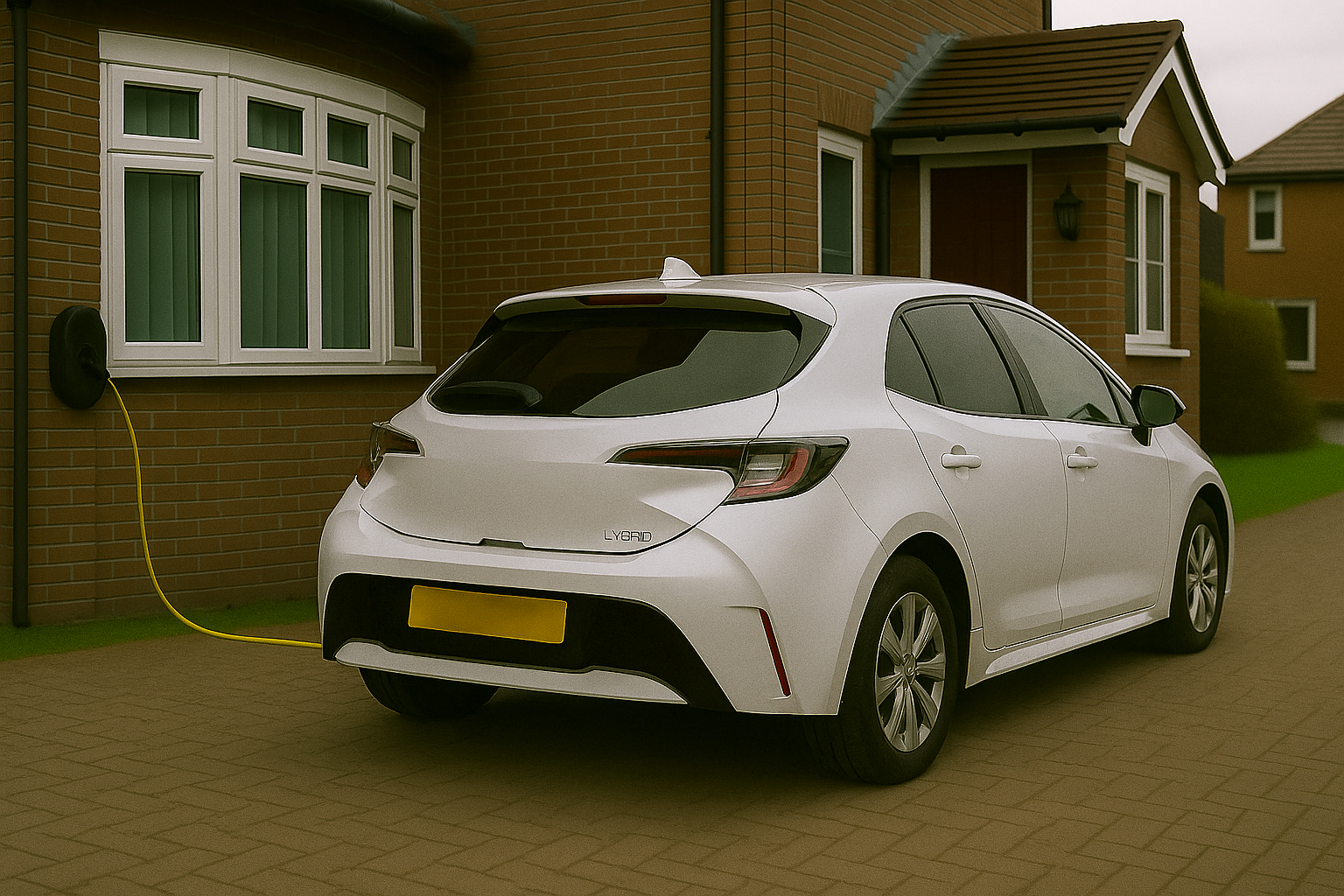Winter Tyres: A Smart Seasonal Choice for Safer UK Driving
Winter Tyres are a topic that divides drivers in the UK. Some see them as an unnecessary extra cost in a country where snow is not guaranteed, while others treat them as essential once temperatures drop. Whether you drive daily on rural B-roads, commute on smart motorways, operate a fleet, or only make short town journeys, it is worth understanding exactly what Winter Tyres are designed to do, and when they deliver genuine safety and performance benefits.
This guide explains how Winter Tyres work, when to consider switching, how they affect braking and traction in cold conditions, how they compare with all-season solutions, and what UK motorists should factor in before buying or fitting them. The goal is not to oversell or exaggerate — but to help you make an informed seasonal decision that improves safety without wasted expense.
What Are Winter Tyres and How Are They Different?
Winter Tyres are not only designed for snow. Their key performance advantage begins when ambient temperatures fall below 7°C, regardless of whether the road is dry, damp, frosty or icy. Their rubber compound stays softer and more flexible in the cold, allowing better grip on winter road surfaces. They also have deeper tread channels and fine sipes to disperse slush and water efficiently.
In contrast, standard summer compounds stiffen as the temperature drops, reducing contact with the surface and increasing braking distances. This is why Winter Tyres can outperform even on a clear, cold day without snow present.
When Are Winter Tyres Most Effective in the UK?
Although the UK climate varies region-to-region, many areas experience weeks or months where early mornings and evenings remain below the 7°C threshold. Winter Tyres deliver their benefits exactly in these shoulder months — not solely during severe weather.
They are especially valuable for:
-
Early commuters and night drivers when surfaces remain cold or frosty
-
Rural, hilly and coastal regions prone to ice, frost and slush
-
Motorway drivers who need predictable braking at winter speeds
-
Households with only one vehicle that must remain usable in all weathers
-
Fleet vehicles and vans where downtime costs money
Even if snowfall is rare, the combination of cold ambient temperature, early darkness, salted roads, wet leaves and dew-frost creates conditions where Winter Tyres consistently outperform summer compounds.
How Winter Tyres Improve Braking, Control and Traction
Multiple independent UK tests consistently find shorter stopping distances on Winter Tyres in low-temperature conditions. This is not marketing — it is physics. The softer rubber maintains friction, and the tread geometry actively clears dampness and surface contaminants.
In real terms, Winter Tyres can help with:
-
Shorter stopping gaps in cold, wet urban stops
-
Extra traction when pulling away on icy side streets
-
Better directional control when steering on roundabouts
-
Reduced risk of sliding on untreated residential roads
-
More predictable handling when braking downhill or off-ramps
These advantages compound at real-world speeds, where even a few metres can be the difference between a near-miss and a collision.
Are Winter Tyres Mandatory in the UK?
Unlike several European countries, the UK does not legally mandate Winter Tyres. That means the decision is voluntary. This is partly why many British drivers have never tried them — they are not required, so uptake is mostly driven by awareness and risk tolerance.
However, legality and prudence are different things. For motorists who depend on reliable mobility in winter, the absence of a law does not negate the practical safety advantages Winter Tyres offer in the colder months.
Cost, Storage and Wear Considerations
A common objection is cost. But the economics of Winter Tyres are often misunderstood. Using Winter Tyres during the winter months means your summer set is resting and not wearing down. Instead of one set doing twelve months of work, two sets share the annual mileage — extending the lifespan of each.
Cost considerations to keep in mind:
-
You pay up front for two sets, but not for two sets per year
-
Storage can be inexpensive at home or done by a fitting centre
-
Winter Tyres wear slower in cold conditions because they are in their optimum range
-
Reduced accident risk can save repair excess, vehicle downtime and insurance implications
For drivers who keep vehicles for several years, the long-term cost per mile is often comparable to using only one set all year — with the added safety margin in winter.
Winter Tyres vs All-Season Tyres
All-season Tyres are an increasingly popular compromise. They provide credible performance across varied weather without needing seasonal swaps. However, they do not match the winter-specific capability of proper Winter Tyres during sustained cold periods.
| Situation | All-season | Winter Tyres |
|---|---|---|
| Mild winters, urban driving | Suitable | Better only in extremes |
| Regular cold mornings & rural roads | Acceptable | Strongly advantageous |
| Frost/ice-prone commutes | Adequate | Significantly safer |
| Occasional heavy snow | Manageable | Much better traction and control |
All-season Tyres are a good step if you never want to swap. But if winter resilience and maximum control are a priority, Winter Tyres still outperform in the conditions they are designed for.
Do Winter Tyres Still Help Without Snow?
Yes — this is often the biggest misconception. Winter Tyres earn their advantage from temperature and surface condition, not just visible snow. Roads can be cold and slippery without any snowfall. Black ice formation, dew freeze, shaded bridges, ungritted residential areas and moisture on polished tarmac are all scenarios where Winter Tyres mechanically outperform.
Insurance and Legal Considerations
Using Winter Tyres is fully permitted in the UK. As long as the Tyres are correctly rated for the vehicle and fitted in sets of four (not mixed front/rear), insurance implications are minimal. Some insurers even note seasonal Tyres as a positive risk-reduction measure. The key is proper fitment, matching tyre size and carrying the correct load and speed rating.
When to Switch and How to Manage the Seasonal Change
Most experts recommend switching to Winter Tyres when daily temperatures consistently sit under 7°C. That typically aligns with late October to early April depending on region. Tyre centres often offer swap-over packages that include:
-
Fitting and balancing
-
Integrity check of the unused set
-
Seasonal storage (optional)
-
Re-fit in spring with inspection
Planning ahead before the first cold snap avoids seasonal fitting queues and ensures readiness when conditions become hostile unexpectedly.
Fleet, Commercial and High-Mileage Benefits
Businesses and high-mileage drivers have more to lose from winter downtime. Missed deliveries, aborted site visits, cancelled client appointments or stranded vans all convert directly into operational cost. Winter Tyres are effectively a continuity measure — keeping vehicles usable throughout seasonal disruption without relying on weather forecasts.
For taxi fleets, care providers, utilities, engineers and trades, Winter Tyres are less about comfort and more about uptime, reliability and duty of care.
Who Should Seriously Consider Winter Tyres?
Winter Tyres are worth consideration if any of the following apply:
-
You drive before 9am or after 4pm in winter months
-
You live near hills, villages, uneven rural routes or untreated streets
-
You require reliable access regardless of weather
-
You operate a work vehicle or transport others
-
Your vehicle is heavy, rear-wheel drive, or torque-sensitive
-
You have experienced loss of traction in winter previously
Even motorists who drive relatively little can benefit if a single icy incident would create a major disruption.
Key Takeaways for UK Motorists
To summarise objectively:
-
Winter Tyres are optimised for cold, not just snow
-
They consistently shorten braking distances in low temperatures
-
They improve traction, steering and stability in seasonal conditions
-
They protect confidence and reduce winter-related disruptions
-
They are not a legal requirement in the UK — but they are a proven risk-reducer
-
Running two sets does not necessarily double long-term cost
-
They are most beneficial for real-world UK winter mornings and evenings
Smarter Motoring Through Seasonal Preparedness
Winter Tyres are not a mandatory purchase and not right for every driver — but they represent a well-proven, evidence-based upgrade for those who value control, predictability and continuous mobility during colder months. At Motor Bridge UK we believe whether you drive for work, for family, or for necessity, taking a seasonal approach to tyre choice is an example of smarter, preventative motoring rather than reactive motoring.
Preparedness is always cheaper than recovery. A winter-ready vehicle does more than keep you moving — it reduces stress, improves safety margins and protects both you and others on the road when conditions are at their most unforgiving.
Why not take a look at our Winter Tyre Solutions section where you’ll find reputable National UK tyre companies.




